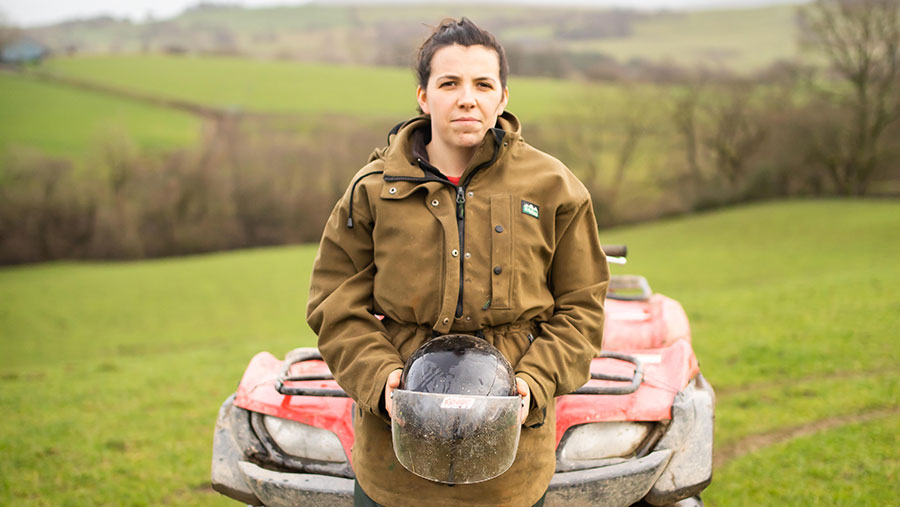Video: Young farmer cheats death in quad bike accident
 © Welsh government
© Welsh government A young farmer has told how she cheated death in a quad bike accident which left her with a fractured skull, neck injuries and major bruising.
Beca Glyn, 26, was helping to herd sheep from a field, across a small country road and into a shed at the family farm in Betws y Coed, Wales.
See also: Guide to keeping your quad bike legal on the road
But she swerved sharply too quickly and tipped the quad bike over. It landed on top of her and she hit her head on the road.
“The sheep started moving in the wrong direction,” she says.
“I panicked and in that split second, thought the dog may not manage to bring the sheep back the right way but if it did, I risked driving into them.”
Beca wasn’t wearing a safety helmet – and says life may never be quite the same again after nine months of rest, physio and rehabilitation.
Her father Glyn and a neighbour were able to lift the bike off Beca and called the emergency services immediately. Both the land and air ambulances were at the scene quickly.
Disturbed sleep
But her medical team are still unsure whether she will ever regain her sense of taste, smell and ability to sleep through the night following the accident in March 2018.
Having sustained concussion, Beca doesn’t remember any of the detail of the accident at the roadside.
But she pays tribute to the expertise of the paramedics and to the A&E team at Ysbyty Gwynedd in Bangor where she was taken by ambulance on a blue-light journey.
Despite the ongoing effects, which she hopes will improve, Beca has made an excellent recovery and is now on a mission to encourage safer working with farm vehicles.
Huge progress
“I know I’m very lucky to be alive and I’ve made huge progress,” she says.
“But I also know that if I had been wearing a helmet and undertaken training on driving an ATV (all-terrain vehicle) safely, I may not have ended up in hospital at all.”
“I would give anything not to have struggled with months of exhaustion after the slightest bit of effort, and I would still be able to enjoy the wonderful smell and taste of a roast lamb dinner.
“So much changed after my accident, and despite trying different remedies and therapies, disrupted sleep patterns still affect me every day.”
Farm safety
Watch this YouTube video of Beca’s story:
Beca is determined to do all she can to raise awareness of farm safety and promote the availability of specialist training, which can significantly reduce the risk of on-farm accidents.
“Almost everything we do on the farm has associated risks, from handling animals to operating machinery and from dealing with pesticides to driving tractors and ATVs, but provided you have had training, you will know what steps to take to reduce the risks of accidents.
“You can’t put a price on your health and wellbeing, as I found out the hard way.”
Eligible individuals registered with Farming Connect can receive training on a range of practical, business and technical topics, subsidised by up to 80%.
Top tips for driving an ATV safely
- Make sure all riders receive adequate training
- Always wear a suitable helmet
- Don’t carry passengers (unless the quad bike is designed for passengers)
- Children under 13 years old are prohibited from using an ATV at work. Over 13s should only ride ATVs – of an appropriate size and power – after formal training on a low-power ATV
- Carry out safety checks and maintenance in accordance with the manufacturer’s recommendations – regularly check tyre pressures, brakes and throttle
- Secure loads on racks and make sure they are not overloaded and evenly balanced
- Take extra care with trailed or mounted equipment and understand how they affect stability
- Stick to planned routes, where possible and walk new routes if necessary to check for hidden obstructions, hollows or other hazards
For side-by-side ATVs the same legal requirements apply, and in addition:
- Users should select a machine fitted with a Roll Over Protective Structure (ROPS).
- The driver and passengers should wear lap belts/seat restraints.
(Source: Health & Safety Executive)
